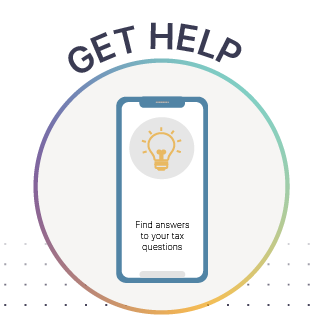Before you proceed, check where the notice came from
The first thing to do is to check the return address to be sure it’s from the IRS and not another agency.
If it’s from the IRS, the notice will have instructions on how to respond. If you want more details about your tax account, you can order a transcript.
If it’s from another agency, such as a state tax department, you’ll need to call that office for an explanation.
If the letter is from the Department of the Treasury Bureau of the Fiscal Service, these notices are often sent when the IRS takes (offsets) some or part of your tax refund to cover another, non-IRS debt. The Bureau of the Fiscal Service only facilitates the transfers – it won’t have information about your IRS account or where the money is being sent.
Understanding your Notice
IRS notices and letters are numbered and provide contact information for questions. Both are usually shown in the upper right corner. The notice or letter will explain the reason for the contact and give instructions on how to handle the issue.
If you’ve received a letter or notice from the IRS, the first step is to determine exactly what the IRS is attempting to communicate to you. In other words, you should read the letter or notice carefully and assess its contents. To better understand the purpose of the letter or notice, you’ll need to identify the letter or notice number, which is located in either the top or bottom right-hand corner of the letter or notice preceded by the letters CP or LTR.
Once you’ve found the CP or LTR number, you can proceed to IRS’ Notices & Letters Search, which is a look-up tool for both individual and business taxpayers. The second step is to follow the instructions on the notice or letter if you disagree with the information. You can call the IRS at the contact phone number located in the top right-hand corner of the notice or letter. Also, you can write to the IRS at the address on the notice or letter. The timeframe for the IRS to respond to your written communication is provided on the notice or letter.
Converting your notice or letter to an alternative media format
If you’ve already received a notice or letter in print format and prefer it in an alternative media format, such as Braille, large print, audio, or electronic format, you can choose one of the three methods below to request it in an alternative media format:
- Call the IRS tax assistance number at 800-829-1040.
- Fax your notice and a cover sheet to: Alternative Media Center (AMC), at 855-473-2006. On the cover sheet, write “Alternative Media Format” at the top and include your name, address, daytime phone number and your preferred alternative media format.
- Mail your notice with a note stating your preferred format (Braille or large print) to: Internal Revenue Service, Alternative Media Center, 400 N. 8th St. Room G39, Richmond, VA 23219.
It will take up to 15 business days for the IRS Alternative Media Center to convert your notice to your preferred format and mail it back to you.
Languages other than English
Taxpayers can complete Form 1040 Schedule LEP, Request for Change in Language Preference, to receive written communications from the IRS in one of twenty languages of your choice. Follow the LEP instructions and file the schedule with your tax return. Once processed, the IRS will be able to determine your translation needs and provide you translations when available.
There are a few main categories for notices:
Informational notices
Claiming certain tax credits and other interactions with the IRS may lead the IRS to send you a notice. Most of the time, they are just for your records and you don’t need to reply.
Notices about changes to your tax return or account
The IRS may have already made a change or be looking at your return to see if there was a mistake. The notice will have instructions on if or how you need to reply.
Some common notices of a change:
Notices where the IRS says you owe taxes
If you have a balance on your tax account, you’ll get a notice letting you know how much you owe, when it’s due, and how to pay.
If you can’t pay the full amount by that date, you need to figure out what payment options might work for your situation, and act to set up a payment plan or other way to pay off your balance.
What if I want to talk to someone about the notice?
Each notice should include contact information. Some phone numbers on letters or notices are general IRS toll-free numbers, but if a specific employee is working your case, it will show a specific phone number to reach that employee or the department manager.
If you’ve lost your notice
If you’ve lost your notice, call one of the following toll-free numbers for help:
- Individual taxpayers: 800-829-1040 (TTY/TDD 800-829-4059)
- Business taxpayers: 800-829-4933
What if I want to ask for a tax professional’s help to reply to a notice or letter?
You can resolve most notices without help, but you can also get the help of a professional – either the person who prepared your return, or another tax professional.
Tips on how to choose a tax professional








